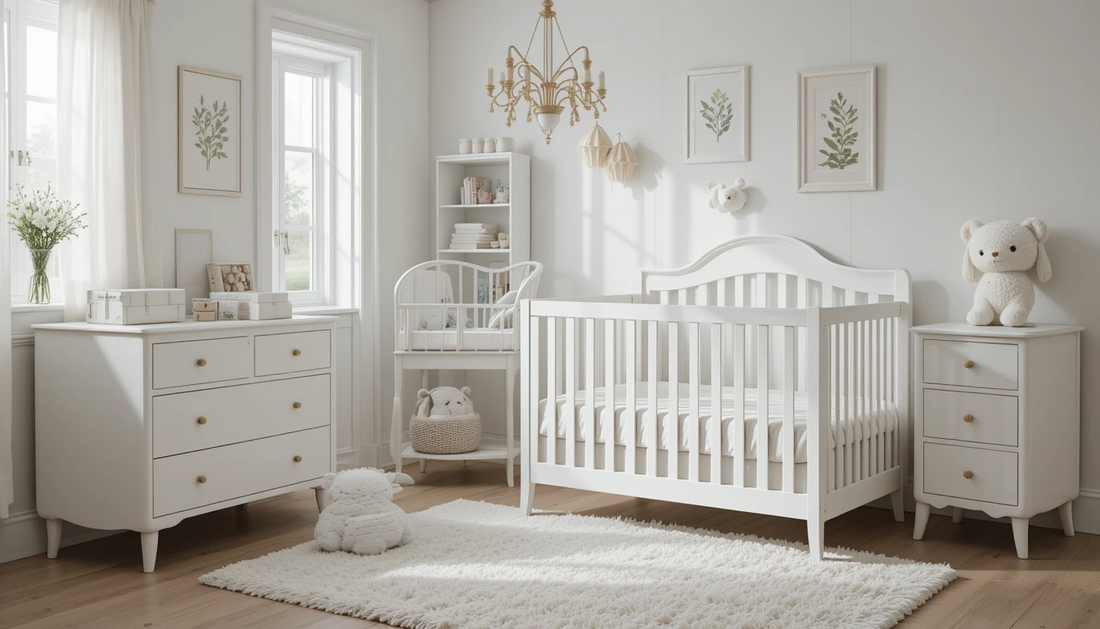
Choosing the Perfect Baby Cot for Your Nursery
PillowNap TeamShare
Welcoming a new baby into your home is one of life’s most exciting milestones. As you prepare your nursery, one of the most important purchases you’ll make is choosing the Baby Cot—a place where your baby will spend a significant amount of time during their early months and years. With countless options on the market and brands like the babymore brand offering a variety of stylish and functional designs, it's essential to know what to look for to ensure safety, comfort, and longevity. Let’s walk through the key considerations to help you make the perfect choice.
1. Understanding the Importance of a Quality Cot
Your baby’s cot is more than just a piece of furniture—it’s their sanctuary. A quality cot provides a safe and secure environment that supports healthy sleep, which is crucial for your baby’s development. Poor quality cots may not meet safety standards, could be made from harmful materials, or may not last through the toddler years. Therefore, investing time and effort into this decision is vital.
2. Safety Standards and Certifications
Safety should always be the top priority when selecting a baby cot. Ensure that the cot you choose complies with the latest safety regulations in your region. For example, in the UK, cots should adhere to the British Safety Standard BS EN 716. Look for features like fixed side rails (drop-side cots are no longer recommended), a snug-fitting mattress, and slats that are spaced no more than 6.5 cm apart to prevent your baby’s head from slipping through.
3. Choosing the Right Size for Your Space
Nursery sizes vary greatly, especially in apartments or smaller homes, so measure your available space before choosing a cot. Cots generally come in standard sizes (approx. 60x120 cm) and cot beds (approx. 70x140 cm), which convert into toddler beds. If space is limited, a compact cot might be ideal. However, if you want a long-lasting investment, a cot bed that grows with your child can be more economical in the long run.
4. Cot Bed vs. Standard Cot – What’s the Difference?
Many parents wonder whether to go for a standard cot or a cot bed. A standard cot is typically used from birth until around 2 years, while a cot bed can be converted into a toddler bed and used up to 4 or even 5 years of age. Cot beds offer more value for money and can make the transition from cot to bed smoother for your child. However, standard cots are usually more compact, making them better suited to smaller spaces.
5. Adjustable Mattress Heights
Look for a cot with adjustable mattress base heights. This feature allows you to raise the mattress for a newborn—making it easier to lift your baby in and out—and lower it as your baby grows and starts to sit or stand. Typically, three height positions are ideal for following your baby's development and ensuring safety.
6. Mattress Matters – Don't Compromise
A high-quality mattress is just as important as the cot itself. Ensure it fits the cot snugly with no gaps at the sides. It should be firm, flat, and made of breathable materials to reduce the risk of suffocation or SIDS (Sudden Infant Death Syndrome). Avoid second-hand mattresses, as they may have deteriorated or contain allergens. Many reputable cots come with optional mattress recommendations, which can be helpful when making your decision.
7. Storage Solutions and Multifunctionality
Some baby cots come with built-in drawers or shelves beneath the base, providing extra storage for baby essentials like bedding, nappies, or clothes. This feature can be a lifesaver, especially in smaller nurseries. Additionally, look for cots that offer teething rails (protective plastic strips on the edges) or convertible options, which can later be transformed into a sofa or junior bed.
8. Materials and Eco-Friendliness
It’s always wise to check what materials your cot is made from. Solid wood, such as pine or beech, is typically more durable and stable than cheaper materials like MDF or particleboard. If you're concerned about sustainability, choose a cot made from FSC-certified wood or from a brand committed to eco-friendly practices. Low-VOC paints and finishes are also important for maintaining healthy indoor air quality.
9. Style and Aesthetics
While safety and functionality are essential, you’ll also want a cot that complements your nursery’s design. The good news is that today’s market offers a wide range of styles—from modern minimalist to classic and vintage. Whether you're going for a gender-neutral theme, a rustic vibe, or a pastel paradise, you’ll find cots that match your taste. Neutral colours like white, grey, or natural wood are versatile and timeless.
10. Budgeting Smartly
Price ranges for baby cots can vary drastically—from under £100 to well over £500 depending on the brand, features, and quality. Establish a budget early on, but try not to compromise on safety or essential features. Brands like babymore strike a good balance between quality and value, offering both stylish and practical solutions without breaking the bank. Keep an eye out for bundle deals that include a cot, mattress, and bedding.
Final Thoughts: Making a Confident Choice
Choosing the perfect baby cot doesn't have to be overwhelming. Focus on safety certifications, comfort, adaptability, and style that suits your home. Measure your space, set your budget, and compare options based on essential features—not just aesthetics. Think long-term: will the cot serve your baby for more than a year or two? Will it grow with them into toddlerhood?
The perfect cot should provide peace of mind while blending seamlessly into your nursery. Take your time, read reviews, and don't hesitate to visit a showroom if possible. When you make the right choice, you’re not just buying furniture—you’re creating a safe, cozy corner where your baby will dream, grow, and thrive.
